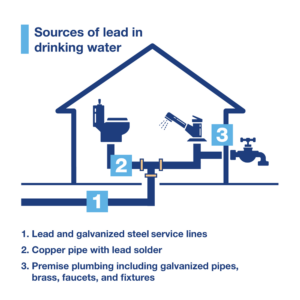Home / Your Water / Lead Awareness / Minimize Your Risk
Minimize Your Risk

Lead is a toxic metal that was used for many decades in products found in and around our homes. Swallowing lead paint chips or breathing in lead paint dust presents the biggest risk of exposure. Lead can also get into drinking water through the corrosion of pipes and plumbing materials that may contain lead.
Ingesting lead can cause health concerns for people of all ages, particularly pregnant women, infants, and young children. In children, low exposure levels have been linked to learning disabilities, behavioral problems, and other issues. No amount of lead is safe.
See what information Louisville Water has about your service line material using our inventory lookup tool. Check our records here.
Maintain Optimal Water Quality
If you want to minimize potential exposure to lead in drinking water, follow these simple steps:
- Run cold-water for a minimum of five minutes at the maximum flow after water has not been used for more than six hours and before using the water for cooking or drinking.
- Only use cold tap water for cooking or preparing baby formula.
- Never use hot tap water for drinking or cooking.
- Boiling water does not reduce levels – in fact, it may make lead levels more concentrated.
- Remove any faucet aerators, soak in vinegar for 15 minutes and remove any accumulated particles. The aerator is at the tip of most faucets and can usually be screwed on and off.
- Consider purchasing a filter certified by ANSI/NSF International for lead reduction.

